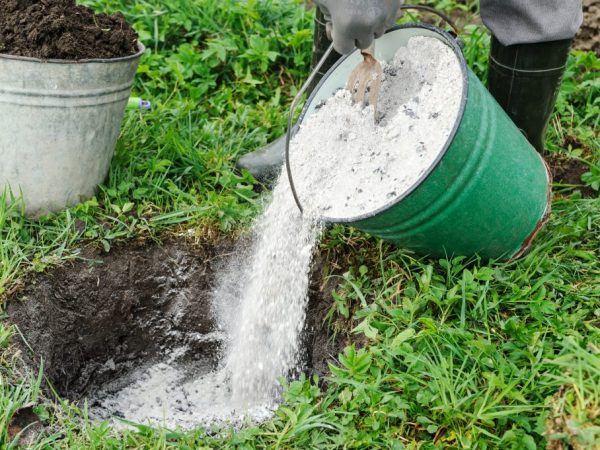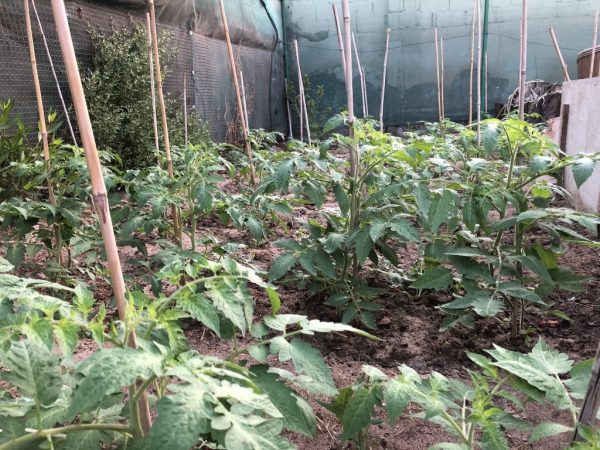Rules for feeding tomato seedlings with ash
Recently, gardeners have given preference to natural types of feeding, among which wood ash occupies a special place. In terms of the amount of micro- and macroelements, it can compete with fertilizers produced at chemical plants, therefore, fertilizing tomato seedlings with ash is widespread.

Rules for feeding tomato seedlings with ash
Feeding characteristic
Ash is a product of combustion of organic substances, it contains a large amount of potassium, phosphorus, calcium. All elements are easy to digest:
- The magnesium content helps to increase yields and improve the palatability of the fruit.
- The plant becomes more hardy and assimilates nitrogen from the soil, due to the content of calcium in wood ash.
- Potassium protects tomatoes from pests. It also helps to increase frost resistance, gives the tomato brightness and aroma.
- Moisture, along with useful substances necessary for a garden crop during growth, drought, is transported with the help of sodium.
The ash residue can be stored for quite a long time. To do this, it is poured into hermetically sealed vessels so that no liquid that can wash out all useful elements gets into it.
Ash benefits
Ash is capable of:
- reduce soil acidity;
- increase the alkali content in the earth;
- have a beneficial effect on increasing the number of beneficial microorganisms in the soil;
- protect tomatoes from fungal diseases;
- maintain the effect of the fertilizer application.
The composition does not contain chlorine, which is very useful for tomatoes, so it can be used already when harvesting seeds for seedlings.
For feeding tomatoes, it is recommended to use only oven ash. The remains of combustion of plastic, rubber, and other items resulting from chemical production must not be used as fertilizer. They contain a huge amount of not only useless, but even dangerous components for human health and for garden crops.
Fertilization methods
Fertilizer is used in different ways:
- applied dry to the soil;
- in the form of an ash solution;
- sprinkling tomato beds;
- spraying tomato sprouts.
Tomatoes react intensely to such feeding. The color of the stems and foliage becomes deep green, the green mass and inflorescences gain juiciness. At the same time, if feeding the tomato seedlings with ash did not bring any benefit to the plant, there will be no changes. In this case, it is advisable to re-process the tomatoes.
When feeding tomatoes with ash residue, one must not forget that an excess of ash in the soil can adversely affect both the soil and the tomatoes. When using this fertilizer as a top dressing, it cannot be mixed with other organic fertilizers.
Feeding rules

Ash will protect plants from pests
Most often, gardeners use liquid feeding. To do this, prepare a solution of 150 g of ash and 10 liters of water. The consumption of such a mixture is ½ l for one tomato bush.A groove is made around the plant, fertilizer is poured into it and sprinkled with earth. Feeding seedlings of any tomatoes with an ash solution prepared according to the above recipe should be carried out no more than once every 2 weeks.
Ash is advised to boil for 30 minutes, then it is insisted. Only after that, it is permissible to feed the tomato seedlings with ash.
Ash has a powerful disinfectant property and also kills pathogenic bacteria. Fertilizing tomato seedlings with wood ash can also be used as a weapon against garden pests and diseases. This solution must be supplemented with 40-50 g of laundry soap. It is added to make the mixture "stick" to the tomato leaves.
It is recommended to spray tomato seedlings in the evening, when the sun has gone down enough and cannot burn the leaves of the plant. If measures are taken to combat slugs, the solution is simply poured around the bushes.
Seed treatment
Liquid top dressing of tomatoes is used during the preparation of planting material. It disinfects tomato seeds. For this, the seeds are dipped into a solution prepared at the rate of 1 tsp. dry ingredient in 1 liter of water. The best effect is achieved when using melt water or rainwater. The mixture is infused for a day, after which tomato seeds are dipped into it and left for 5-6 hours.
During fruiting
During the ripening period of the fruit, it is recommended to use an ash infusion prepared according to the following recipe: 1 liter of ash is poured into 10 liters of water, then the solution is allowed to brew for 7 days. After the specified time, the infusion is passed through a filter and added with 20 ml of iodine, 10 mg of boric acid. The resulting mixture is sufficiently concentrated, therefore it is diluted in a ratio of 1:10. The consumption of such a solution is 1 liter per 10 tomato bushes.
Recommendations for use
- The introduction is carried out when digging up the earth in future tomato beds. This is done twice a year: in the fall after the harvest, when preparing the garden for wintering, and in the spring after the snow melts and the earth warms up. For each square meter, 150-200 g of fertilizer are used. This simple operation promotes the rapid rooting of tomato seedlings. In the future, stronger, more disease-resistant plants will grow from the shoots. In addition, the quality and quantity of the crop becomes much higher.
- When planting seedlings in open ground, 1 tablespoon is added to the prepared holes. fertilizers, then sprinkle each hole with earth. Next, tomato seedlings are placed in them.
- Ash has a protective function. Places of cuts and breaks of stems, covered with ash powder, do not rot and do not attract garden pests.
- During the flowering period, the soil is sprinkled with ash around each tomato bush. For 1 sq. m of tomato beds takes half a glass of dry fertilizer. This improves the palatability of the tomatoes.
After abundant watering, gardeners recommend pouring 50 g of ash powder under each bush.
Conclusion
The use of ash as fertilizer for tomatoes has a beneficial effect on plant growth, the growth of green mass, the formation of ovaries, and fruit ripening. Root and foliar feeding of tomatoes with organic matter combustion residues does not cause much trouble.
There are no difficulties in preparing ash solutions; it does not require additional investment or labor. The result of applying timely dressings will delight any gardener.


